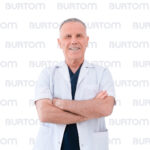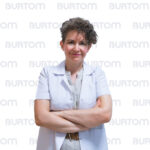Burtom ‣ Departments ‣ Otorhinolaryngology
Language: 🇬🇧 English | 🇹🇷 Türkçe

Otorhinolaryngology Department Overview

The Otorhinolaryngology Department, commonly known as ENT (Ear, Nose, and Throat), is a specialized medical unit dedicated to the comprehensive care of disorders related to the head and neck. Highly trained otolaryngologists within this department diagnose and treat a broad spectrum of conditions affecting the ears, nose, throat, and associated structures. Services provided encompass medical consultations, diagnostic procedures, and both surgical and non-surgical interventions. Common areas of expertise include hearing disorders, sinusitis, allergies, voice and speech problems, as well as the management of head and neck cancers. The Otorhinolaryngology Department plays a crucial role in enhancing patients’ quality of life by addressing a diverse range of ear, nose, and throat health issues.
Key Functions of an Otorhinolaryngology

The key functions of Otorhinolaryngology, also known as ENT (Ear, Nose, and Throat) Medicine, encompass a wide range of diagnostic, therapeutic, and surgical services related to the head and neck. Here are the key functions of Otorhinolaryngology:
Diagnostic Evaluations: Conduct thorough assessments and diagnostic tests to identify and understand disorders affecting the ears, nose, throat, and related structures.
Medical Consultations: Provide expert consultations to patients experiencing symptoms or conditions related to the head and neck, offering accurate diagnoses and treatment recommendations.
Surgical Interventions: Perform a variety of surgical procedures to address conditions such as tonsillitis, adenoid issues, sinus disorders, ear infections, and head and neck cancers.
Hearing and Balance Care: Evaluate and manage hearing and balance disorders, including hearing loss, tinnitus, and vestibular conditions.
Voice and Speech Therapy: Offer rehabilitation services for individuals with voice and speech disorders, including speech therapy and interventions for vocal cord issues.
Allergy Testing and Treatment: Conduct allergy testing and provide treatment options for patients with allergic conditions affecting the upper respiratory system.
Sleep Medicine: Diagnose and treat sleep disorders related to the upper airway, such as sleep apnea and snoring.
Head and Neck Cancer Care: Provide comprehensive care for head and neck cancers, including early detection, surgical interventions, radiation therapy, and postoperative care.
Pediatric Otorhinolaryngology: Specialized care for children with ENT-related issues, addressing conditions like ear infections, tonsillitis, and congenital disorders.
Facial Plastic and Reconstructive Surgery: Perform surgical and non-surgical interventions for cosmetic and reconstructive purposes related to the head and neck.
Swallowing Disorders: Evaluate and manage conditions affecting swallowing function, including dysphagia.
Maxillofacial Trauma Care: Provide treatment for facial and neck injuries resulting from trauma, including fractures and soft tissue injuries.
Nasal and Sinus Disorders: Diagnose and manage conditions like sinusitis, nasal polyps, and nasal obstructions.
Collaboration with Other Specialties: Collaborate with other medical specialties to ensure comprehensive and integrated care for patients with complex medical conditions.
Patient Education: Educate patients about their conditions, treatment options, and preventive measures to promote overall well-being.
Preventive Care: Emphasize preventive measures to reduce the risk of ENT-related conditions, such as hearing protection and allergy management.
Research and Innovation: Engage in research activities to advance medical knowledge and incorporate innovative approaches into patient care.
These key functions collectively contribute to the holistic care provided by Otorhinolaryngology, addressing the diverse health needs of patients within the realm of the head and neck.
Situations within the scope of Otorhinolaryngology

Otorhinolaryngology, or ENT (Ear, Nose, and Throat) Medicine, deals with a variety of situations related to the head and neck region. Here are some situations within the scope of Otorhinolaryngology:
Ear Infections: Diagnosis and treatment of infections affecting the ear canal, middle ear, and inner ear.
Hearing Loss: Evaluation and management of hearing impairments, including conductive and sensorineural hearing loss.
Sinus Disorders: Assessment and treatment of conditions such as sinusitis, nasal polyps, and chronic sinus infections.
Tonsillitis and Adenoid Issues: Diagnosis and surgical or medical management of tonsillitis and adenoid-related problems.
Voice Disorders: Evaluation and treatment of voice-related issues, including hoarseness, vocal cord nodules, and laryngitis.
Head and Neck Cancers: Comprehensive care for cancers affecting the head and neck, including the throat, larynx, and thyroid.
Allergies: Identification of allergens and management of allergic conditions affecting the upper respiratory system.
Sleep Apnea: Diagnosis and treatment of sleep-disordered breathing, such as obstructive sleep apnea.
Dizziness and Vertigo: Assessment and management of conditions leading to dizziness and vertigo, including inner ear disorders.
Facial Trauma: Treatment of injuries to the face, jaw, and neck resulting from accidents or trauma.
Swallowing Disorders (Dysphagia): Evaluation and management of difficulties in swallowing, which may be caused by various conditions.
Congenital Disorders: Management of congenital conditions affecting the head and neck in pediatric patients.
Rhinoplasty and Facial Plastic Surgery: Cosmetic and reconstructive surgery for aesthetic and functional improvements in the nose and face.
Maxillofacial Abnormalities: Diagnosis and treatment of abnormalities affecting the jaw and facial structures.
Temporal Bone Disorders: Assessment and management of disorders involving the temporal bone, which houses the ear structures.
Tinnitus (Ringing in the Ears): Evaluation and treatment of persistent ringing or noise in the ears.
Meniere’s Disease: Management of a chronic disorder affecting the inner ear, characterized by vertigo, hearing loss, and tinnitus.
Nasal Obstruction: Diagnosis and treatment of conditions leading to nasal blockages and difficulty breathing.
Salivary Gland Disorders: Assessment and management of conditions affecting the salivary glands, including infections and stones.
Thyroid and Parathyroid Disorders: Evaluation and surgical management of thyroid and parathyroid conditions affecting the neck.
These situations showcase the diverse range of conditions that fall within the purview of Otorhinolaryngology, highlighting the specialty’s comprehensive approach to head and neck health.
Patient Experience in the Otorhinolaryngology

The patient experience in Otorhinolaryngology, or ENT (Ear, Nose, and Throat) Medicine, is characterized by a comprehensive and patient-centered approach to the diagnosis, treatment, and management of conditions affecting the head and neck. Here are key aspects of the patient experience in Otorhinolaryngology:
Thorough Consultations: Patients undergo thorough consultations, where ENT specialists actively listen to their concerns, symptoms, and medical history. The goal is to establish a clear understanding of the patient’s condition.
Diagnostic Precision: Otorhinolaryngologists employ advanced diagnostic tools and procedures, including imaging studies, endoscopy, and hearing tests, to accurately diagnose conditions affecting the ears, nose, throat, and related structures.
Patient Education: Otorhinolaryngologists provide detailed explanations of diagnoses, treatment options, and potential outcomes. Patient education is a cornerstone, empowering individuals to actively participate in their healthcare decisions.
Individualized Treatment Plans: Treatment plans are tailored to each patient’s specific needs, taking into consideration the nature and severity of the condition, as well as the patient’s preferences and lifestyle.
Minimally Invasive Techniques: When possible, minimally invasive procedures are prioritized to reduce discomfort, promote faster recovery, and enhance overall patient satisfaction.
Surgical Excellence: In cases where surgery is required, Otorhinolaryngologists strive for surgical excellence, employing the latest techniques and technologies to optimize outcomes while minimizing risks.
Rehabilitation and Speech Therapy: For conditions affecting voice and speech, rehabilitation services are offered, including speech therapy, to enhance communication skills and restore vocal function.
Pediatric-Friendly Care: Specialized care is provided for pediatric patients, ensuring a child-friendly environment and addressing the unique needs of young patients with conditions like ear infections, tonsillitis, and congenital disorders.
Compassionate Care for Head and Neck Cancers: Patients with head and neck cancers receive compassionate and multidisciplinary care, involving collaboration with oncologists, surgeons, and other specialists.
Continuity of Care: Otorhinolaryngologists focus on continuity of care, providing ongoing support and follow-up to monitor progress, address concerns, and make adjustments to treatment plans as needed.
Patient-Centric Communication: Open and transparent communication between healthcare providers and patients fosters trust and ensures that patients are actively involved in decision-making processes.
Postoperative Care: Following surgical procedures, patients receive attentive postoperative care, including guidance on recovery, pain management, and rehabilitation exercises.
Efficient and Supportive Staff: Supportive and efficient administrative staff contribute to a positive patient experience, facilitating appointments, managing paperwork, and addressing logistical concerns.
Overall, the patient experience in Otorhinolaryngology is characterized by a commitment to holistic care, effective communication, and the pursuit of optimal outcomes for patients with conditions affecting the head and neck.
Conclusion

In conclusion, Otorhinolaryngology, or ENT (Ear, Nose, and Throat) Medicine, stands as a specialized medical field dedicated to the holistic care of conditions affecting the head and neck. The patient experience within this discipline is marked by a patient-centered approach, emphasizing thorough consultations, accurate diagnostics, and individualized treatment plans. Otorhinolaryngologists, or ENT specialists, prioritize patient education, providing detailed information about diagnoses and treatment options.
The field’s scope encompasses a wide array of conditions, ranging from common issues like ear infections and sinus disorders to more complex cases such as head and neck cancers. The department’s commitment to surgical excellence, minimally invasive techniques, and pediatric-friendly care reflects a dedication to optimizing patient outcomes while ensuring comfort and a swift recovery.
The patient journey in Otorhinolaryngology extends beyond diagnosis and treatment to encompass ongoing support, postoperative care, and rehabilitation services. Collaboration with other medical specialties, efficient administrative support, and compassionate communication contribute to a positive patient experience.
Ultimately, Otorhinolaryngology plays a pivotal role in enhancing the quality of life for individuals experiencing a spectrum of ear, nose, and throat conditions. The field’s commitment to research, innovation, and continuous improvement underscores its dedication to advancing medical knowledge and providing the highest standard of care for patients.
Medical Devices Used in the Otorhinolaryngology

Otorhinolaryngology, or ENT (Ear, Nose, and Throat) Medicine, utilizes a variety of medical devices to aid in diagnosis, treatment, and surgical interventions for conditions affecting the head and neck. Here are some commonly used medical devices in Otorhinolaryngology:
Otoscope: Used to examine the ear canal and eardrum for infections, blockages, or abnormalities.
Nasal Endoscope: A flexible or rigid endoscope used to visualize the nasal passages and sinuses for diagnostics and surgical planning.
Laryngoscope: Instruments for visualizing the larynx and vocal cords, commonly used in procedures such as laryngoscopy.
Audiometer: Measures hearing ability by testing a patient’s response to different frequencies and intensities of sound.
Tympanometer: Assesses the movement of the eardrum in response to changes in air pressure, aiding in the diagnosis of middle ear conditions.
Flexible Fiberoptic Laryngoscope: Enables detailed examination of the larynx and vocal cords through a thin, flexible tube with a light source.
Video Stroboscope: Used for high-speed imaging of vocal cord function, aiding in the assessment of voice disorders.
Cautery Unit: Employed for controlled tissue cauterization during surgical procedures to reduce bleeding.
Microdebrider: Utilized for precise removal of tissue, such as nasal polyps or obstructive lesions, with minimal damage to surrounding structures.
Suction Devices: Assist in removing excess fluids and secretions during procedures and surgeries.
Balloon Sinuplasty Devices: Used in minimally invasive procedures to open blocked sinus passages and alleviate sinusitis symptoms.
CO2 Laser: Provides a focused laser beam for cutting or vaporizing tissues during certain surgical procedures.
Nasal Splints: Support structures inside the nose after surgery to maintain proper healing and prevent collapse.
Tonsillectomy Instruments: Specialized tools for the removal of tonsils, often used in cases of recurrent tonsillitis.
Tracheostomy Tubes: Inserted into the trachea to establish an airway in cases of respiratory distress.
Bone Conduction Hearing Aids: Transmit sound vibrations directly to the inner ear through bone, suitable for certain types of hearing loss.
Speech Audiometer: Evaluates speech recognition and discrimination as part of a comprehensive hearing assessment.
Nasal Packing Materials: Used to control bleeding and support healing after nasal surgeries.
These medical devices play a crucial role in enhancing the diagnostic capabilities and treatment options available to Otorhinolaryngologists, contributing to the overall effectiveness and precision of care in this specialized field.
Get a Free Second Opinion
Experienced Burtom Medical Team is Ready to Help

I consent to Burtom Health Group using my aforesaid personal data for the purposes described in this notice and understand that I can withdraw my consent at any time by sending a request to info@burtom.com.






